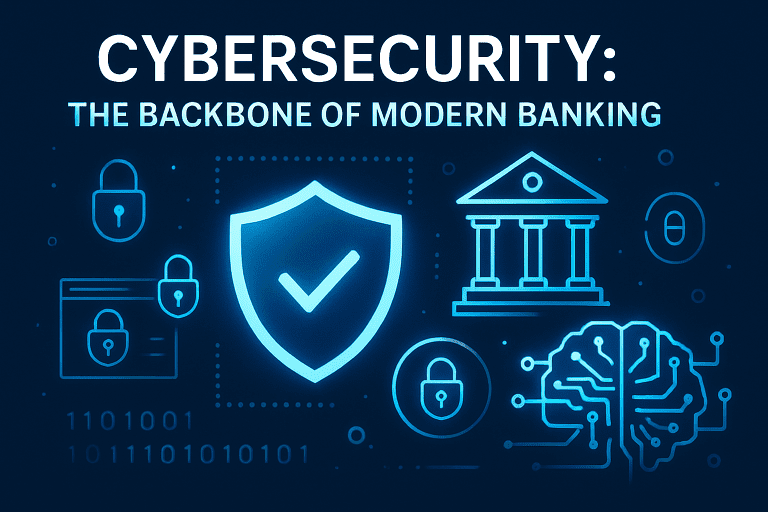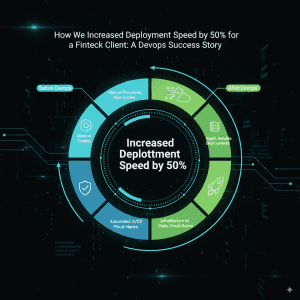Introduction
In today’s hyperconnected financial ecosystem, cybersecurity has become the lifeline of trust, resilience, and sustainable growth in modern banking. With the rise of digital transformation, online banking, cloud adoption, and artificial intelligence (AI), financial institutions increasingly depend on technology to deliver seamless services. However, this digital evolution has also expanded the attack surface, giving cybercriminals unprecedented opportunities to exploit vulnerabilities.
Banks remain the most targeted industry for cyberattacks globally. According to IBM’s Cost of a Data Breach Report 2024, the average cost of a single data breach in the financial sector is USD 5.9 million—significantly higher than other industries. A report by Accenture reveals that cybercrime costs the banking industry USD 18.3 million annually per institution. These staggering figures underscore that cybersecurity is no longer just a compliance requirement—it is fundamental to business continuity, customer trust, and competitive advantage.
Banks today operate beyond brick-and-mortar branches, serving as global digital platforms managing vast sensitive data: personal identification numbers, transaction records, loan and credit details, and institutional portfolios. A breach can lead to massive financial fraud, reputational damage, and systemic economic risks.
Cybersecurity now acts as the new trust currency in banking, replacing the physical security of vaults and guards with digital firewalls, encryption, and AI-driven monitoring. Customers evaluate banks not only on financial products but also on how secure they feel transacting online.
Cybersecurity is also tightly linked to regulatory compliance. Banking is among the most heavily regulated industries worldwide, with agencies like the RBI, ECB, and US Federal Reserve mandating stringent data protection standards. Frameworks such as GDPR, PCI-DSS, and ISO 27001 enforce strict governance. Non-compliance leads to heavy fines and legal battles, making cybersecurity existential for banks.
Finally, cybersecurity underpins digital transformation efforts—powering mobile banking, cloud platforms, APIs, blockchain, and AI services. Without robust security, these innovations risk becoming liabilities. Reimagine cybersecurity not as a drag on innovation but as its enabler.
Organizations like TechOTD AI Services help banks adopt AI-powered threat detection, predictive analytics, and automated incident response—moving beyond reactive security to proactive, intelligent defense. Learn more through the TechOTD Blog.
Why Cybersecurity is Critical in Modern Banking
1. Protecting Sensitive Financial Data
Banks safeguard highly sensitive data—including personal identities, account data, transaction histories, and credit information—making them prime targets for phishing, malware, ransomware, and other cyberattacks. For example, the 2020 Experian South Africa breach leaked data on 24 million individuals and around 800,000 entities, causing widespread financial harm and identity theft.
Robust cybersecurity frameworks leveraging encryption, tokenization, and AI-based monitoring are indispensable to protect data confidentiality and integrity. Learn how AI-driven predictive analytics strengthen these defenses in TechOTD’s insights.
2. Preserving Customer Trust and Brand Reputation
Customer trust is a bank’s most valuable asset. A security breach may cause irreversible damage. The 2016 Bangladesh Bank hack, involving USD 81 million theft via the SWIFT network, shook global finance and raised confidence concerns in digital banking systems.
Banks that invest in and communicate transparent cybersecurity measures build long-term loyalty and market leadership—essential for sustaining competitive advantage.
3. Ensuring Regulatory Compliance
Stricter regulations enforce data security obligations. Non-compliance risks penalties and business disruption. The Equifax breach in 2017, impacting 147 million customers, resulted in a USD 700 million settlement and highlighted the legal importance of cybersecurity compliance.
Banks must meet requirements under GDPR, PCI-DSS, RBI norms, and more. Cybersecurity becomes inseparable from legal and operational strategy.
4. Preventing Fraud and Financial Crime
Sophisticated fraud techniques—SIM swaps, identity theft, voice-based deepfakes—are rising. For instance, cybercriminals used voice deepfakes in 2021 to trick banking staff into releasing funds.
AI-driven fraud detection systems, like those offered by TechOTD AI Services, use behavioral analytics and real-time anomaly detection to combat these threats effectively.
5. Supporting Digital Transformation
Cloud, APIs, and mobile-first solutions improve customer experience but increase vectors for cyber threats. Strong cybersecurity implementation ensures these innovations scale securely, enabling banks to digitize without risking breaches.
Explore the synergy between AI, blockchain, and secure innovation in banking at TechOTD Blog.
Emerging Cybersecurity Challenges in Banking
-
Quantum Computing Threats: Quantum advances risk breaking traditional RSA and ECC encryption, prompting urgency for quantum-safe cryptography adoption.
-
AI-Augmented Attacks: Cybercriminals use AI to automate phishing, spear-phishing, and malware, increasing attack scale and complexity.
-
Cloud Security Complexity: Multi-cloud and hybrid cloud platforms require layered defenses to prevent misconfigurations and access breaches.
-
API Vulnerabilities: Open Banking exposes APIs to attack; robust security and regular audits are mandatory.
-
Insider Threats and Social Engineering: Human risks persist, requiring continuous training and monitoring.
Best Practices for Cybersecurity in Banking
1. Implement Zero-Trust Architecture
Adopt zero-trust to verify all users, devices, and network access continuously. Employ micro-segmentation and granular access controls to minimize attack surfaces.
2. Employ AI and Behavioral Analytics
Use AI-driven monitoring to detect deviations from normal behavior, predict risks, and automate responses. TechOTD AI Services offers advanced AI cybersecurity platforms designed for banking threats.
3. Strengthen Encryption and Key Management
Deploy quantum-resistant encryption algorithms and manage cryptographic keys securely through hardware or software solutions.
4. Adopt Multi-Factor Authentication (MFA)
MFA combines biometrics, hardware tokens, or OTPs to strengthen identity verification and prevent unauthorized access.
5. Regular Security Training and Awareness
Proactive employee training combats phishing, social engineering, and insider threats. Regular simulations reinforce preparedness.
6. Ensure Continuous Monitoring and Incident Response
Implement SIEM solutions with automated alerting and orchestrated incident response to reduce detection and recovery times.
7. Secure Cloud and API Environments
Use cloud-native security controls, real-time compliance scanning, and API gateways to protect digital banking infrastructure.
8. Engage in Continuous Compliance and Auditing
Regularly audit systems to verify controls and stay aligned with evolving regulations.
Discover practical cloud app security techniques on TechOTD’s services page.
Role of AI and Automation in Enhancing Banking Cybersecurity
AI transforms cybersecurity from reactive to proactive through:
-
Predictive threat analytics
-
Automated threat hunting and response
-
Reducing manual workloads for Security Operation Centers (SOCs)
Banks leveraging AI platforms, as provided by TechOTD AI, improve fraud detection accuracy and operational efficiency.
Further AI-driven service excellence insights are available at TechOTD Blog.
Conclusion
Cybersecurity underpins trust, resilience, and sustainable growth in the digital banking era. With threats escalating in scale and sophistication, embracing modern defense strategies—including zero-trust, AI analytics, and quantum-proof encryption—is critical.
Banks that prioritize cybersecurity not only protect customers and comply with regulations but also position themselves as innovators and leaders in secure financial services.
For expert consulting and AI-enabled cybersecurity solutions, visit TechOTD AI Services and explore rich resources on the TechOTD Blog.











